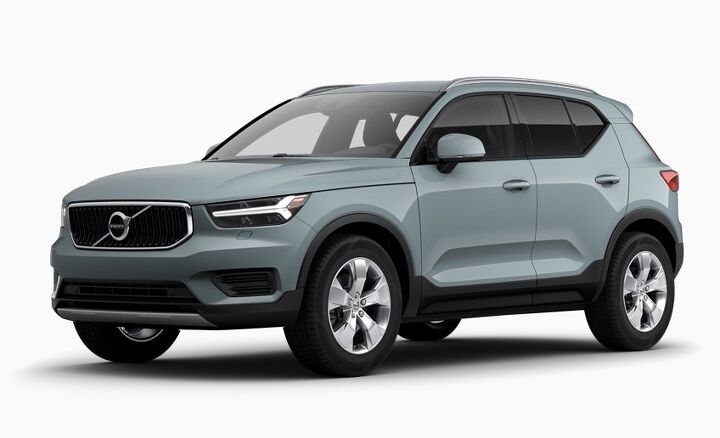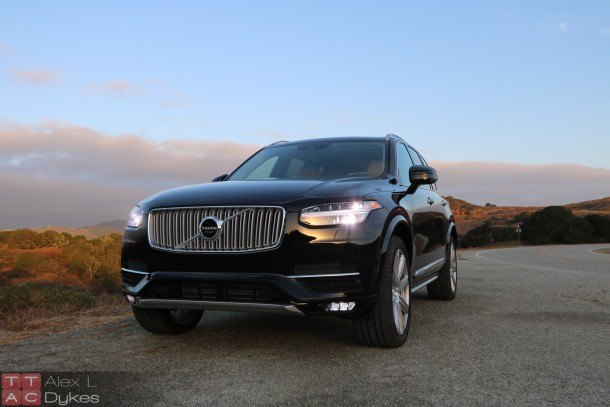#Swedish
Ace of Base: 2019 Volvo XC40
When the majority of the buying public thinks of Volvo, three things generally come to mind: safety, boxy wagons, and professors in tweed sport coats with those weird elbow patches. This is understandable, given that the company made hay selling safe and boxy wagons to professors in tweed sport coats with weird elbow patches.
Volvo has long since de-weirded itself but still marches to a slightly different Swedish beat. It’s currently under the stewardship of a Chinese company that gives the brand enough leash to generally do its own thing. Starting at $35,200, the automaker’s least-expensive car, the XC40, should help bring new buyers to the brand. Let’s see how it stacks up in base form.
2016 Volvo XC90 T6 AWD Review - Sweden's New King (Video)
Many of you have asked why we bother to review a car we’ve already reviewed based on a few hours at a launch event. The all-new 2016 Volvo XC90 is a textbook example of why more time with a car allows for a more complete review.
At launch events, you have no time to perform acceleration or brake tests of a vehicle (and, of course, you aren’t testing the car on the same circuit that the rest of the cars have been tested upon) and you have no ability to drive the competition back-to-back to get a sense of comparison. There is a reason that first drive reviews tend to be fact based: it’s hard to review a car in a vacuum.
So why is the XC90 a textbook example? Because of my own biases. Biases are interesting things. They can blind you to a car’s faults, or they can lead you to overcompensate and find fault.
After digesting my time with the XC90, I started falling into the latter camp. Edmunds 0-60 tested the XC90 and found it slower than expected. I started wondering if I had been wearing rose-colored glasses and asked myself: “Was it really that good?” Therefore, I had to get my hand on one again so I could run it through our battery of tests and drive it on my own for a week to find the answer.
The answer: It is better.
2016 Volvo XC90 First Drive (With Video)
Volvo seems to be on the long road to recovery. Although sales have continued to slip in the USA, the numbers were up worldwide last year. In an interesting twist, 2014 was also the first year more Volvos were sold in China than North America. That could be cause-and-effect since Volvo had been more focused on their European-only new compact sedan and wagon. 2016 finally showers some Swedish love on America with a complete redesign of the XC90, the SUV originally designed for us. Because China is now a bigger market than we are, this XC90 isn’t just for us, but for China and the growing number of big crossovers clogging up Europe as well.
2014 Volvo Facelifts See The Light Of Day
Volvo’s XC90 may be the oldest Volvo on sale but is it the Swede gettin’ some facelift-love? Nej. Swedish spy photographers over at Teknikens Värld have snapped some shots of the mid-sized S60 being refreshed for 2014. Want to know what they said without grabbing a babel fish? Click past the jump and see how much I remember from my high school Swedish lessons.
Review: 2013 Volvo S60 T5 AWD
When Volvo introduced the S60 in 2011, the Swedes advertised their mid-sized sedan as the naughtiest Volvo ever thanks to a 300HP turbocharged engine. While I’m sure former “R owners” would disagree, the S60 has met with sales success with over 18,000 units sold so far this year, a 14% increase over last year. In 2012 Volvo added a less powerful FWD model to the mix to cut the price of entry. For 2013 Volvo has further expanded the S60 line by adding a torque vectoring AWD system to the lightest S60. Volvo also tells us they have completely refreshed their T5 engine for 2013 and tweaked the transmission for the naughty Volvo’s first retouch ahead of the rumored 2014 refresh. Huh? Yep, Volvo’s gettin’ down with the yearly refresh. Does that make the T5 AWD the naughtiest Volvo ever? Let’s find out.




















Recent Comments